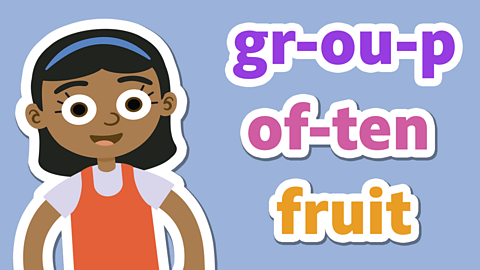Watch: What is figurative language?

Hyperbole, similes and metaphors are all types of figurative language that help to make your writing more interesting.
They can be particularly helpful for creating an image of what you are writing about in the reader’s mind.
Watch this clip to learn the difference between literal and figurative language.

Learn the difference between literal and figurative language.
Watch: What is hyperbole?

Hyperbole is used to exaggerate, intensify and emphasise different points in your writing - it is not meant to be taken literally!
For example:
- The doctor’s care was out of this world.
- The nurses always gave it 200%!

Watch the video below to learn about hyperbole and how you can use it in your writing.
Find out what hyperbole is and how to use it.
What is a simile?

A simile describes something by comparing it to something else, using the words like or as.
For example:
- The carer was as gentle as a dove.
- The man was as tall as a skyscraper.
- Jess was graceful like a gazelle.

What is a metaphor?

A metaphor is a word or a phrase used to describe something as if it is something else.
For example:
- A wave of terror washed over him.
The terror isn't actually a wave, but a wave is a good way of describing the feeling.
- The lady told George, 'You are my sunshine'.
George isn’t sunshine, but it's a way for the lady to explain how great she thinks he is.

Watch: Similes and metaphors
Learn more about similes and metaphors by watching this video.
Learn the difference between similes and metaphors.
Activity 1
Show off your knowledge of figurative language - including similes and metaphors - by completing this quiz!
Activity 2
1. Look at the interesting images below.
1 of 3
2. Now write five sentences inspired by these images that include either:
- hyperbole
- a simile
- a metaphor
Here are a few examples:
Hyperbole
- At the end of a long day, the carer muttered, 'My shoes are killing me!'
- My family watched the video and Mum nearly died of laughter.
Simile
- The team of doctors and nurses worked together like the stars and the moon.
- Each day, the Healthcare Heroes’ care for others was like a sturdy tree!
Metaphor
- The kind nurse had a smile that lit up the room.
- Their work was a rainbow of care and love.

Top tip!
Add extra detail to your simile or metaphor to create a more detailed image in the reader’s mind. For example:
Drew was as hungry as a bear can be extended to say: Drew was starving! He was as hungry as a humongous grizzly bear!

Activity 3

Change these sentences from similes to metaphors. For example:
Her heart was like gold. (Simile)
Her heart is gold. (Metaphor)

1. She was like a rock.
2. They ate like pigs.
3. The children walked as slowly as snails.
4. I have been as busy as a bee today!
5. The clouds look like balls of cotton wool.
6. The dog ran away as quickly as lightning.
7. Elsie danced as gracefully as a swan.
8. That kitten is as cute as a little button.
You can check your answers with this .
Play our fun English game Crystal Explorers. gamePlay our fun English game Crystal Explorers
Use grammar, punctuation and spelling skills to explore jungles, caves and tombs on your mission!

More on Language
Find out more by working through a topic
- count9 of 9

- count1 of 9

- count2 of 9

- count3 of 9

